Kathmandu Drubar Square, Kumari Ghar
- Kathmandu, Asan
- Kathmandu, Indra Chowk
- Kathmandu, Indra Chowk Bead Market
- Kathmandu, JanBahal Chowk
- Kathmandu, JanaBahal Pottery shops
- Kathmandu, Yetkha
- Kathmandu, Naradevi
- Kathmandu, ItumBahal Chowk
- Kathmandu, Kichandra Bahal
- Kathmandu, Bijeswori
- Kathmandu, Babar Mahal Main
- Kathmandu, Babar Mahal Inner
- Kathmandu,Kathesimbu
- Kathmandu, Rani Pokhari
- Kathmandu, Dharahara
- Kathmandu, Royal Palace Street
- Kathmandu, Bhimsenthan
- Kathmandu, Budanilkanth
- Kathmandu, Garden Of Dreams
- Kathmandu, Garden of Dreams North View
- Kathmandu, Thamel
- Kathmandu, National Museum
- Kathmandu, Inside National Museum
- Kathmandu, From the Roof of National Museum
- Kathmandu, Swayambhu
- Kathmandu, Swayambhu Back Side
- Kathmandu, Three Statue
- Kathmandu Durbar Square
- Kathmandu Drubar Square, Basantapur
- Kathmandu Drubar Square, Kasthamandap
- Kathmandu Drubar Square, Hanuman Dhoka
- Kathmandu Drubar Square, Taleju
- Patan, KumbheShwore
- Patan Durbar Square View 1
- Patan Durbar Square Souvinier Shop
At the junction of Durbar and Basantapur Square is a red brick, three-storey building with some incredibly intricate carved windows. This is the Kumari Bahal (House of the LivingGoddess), home to the Kumari, the girl who is selected to be the town’s living goddess until she reaches puberty and reverts to being a normal mortal.
The buildings in the style of the Buddhists’ viharas (monastic abodes) of the valley; is-as built in 1757 by Jays Prakash Malla. Inside the building is the three-storey courtyard, or Kuniari Chowk. It is enclosed by magnificently carved wooden balconies and windows, making it quite possibly the most beautiful courtyard in Nepal. Photographing the goddess is forbidden, but you are quite free to photograph the courtyard when she is not present.
The courtyard contains a miniature stupa carrying the symbols of Saraswati, the goddess of learning. The big gate to the right of the Kumari Bahal conceals the huge chariot that transports the Kumari around the city during the annual Indra Jatra festival. Look for the huge wooden runners in front of the Kumari Bahal that are used to transport the chariot. The wood is considered sacred. You can see part of the chariot from the top of the nearby Trailokya Mohan Narayan Temple steps.

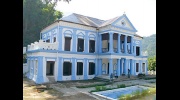
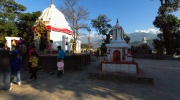
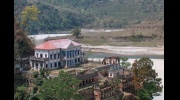
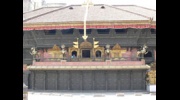
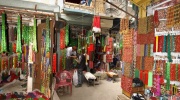
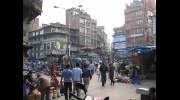
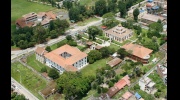
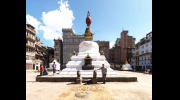
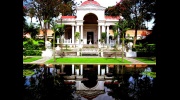

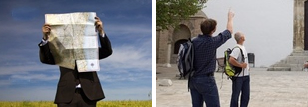






There is no comment yet for this virtual tour.
Be the first one to comment in this virtual tour »